As soon as she returned to Washington, D.C., Eliza talked to the US Army Superintendent of the Office of Public Buildings and Grounds, the man in charge of such things. He didn't think it was a good idea and her request was denied. For the next twenty-four years Eliza Scidmore met with each new superintendent but none of them liked her plan.
Meanwhile, in 1906, a botanist and plant explorer as well as US Department of Agriculture official named David Fairchild imported 100 cherry trees, including 25 weeping ones, from Japan. He wanted to study the trees' hardiness and planted them on his property in Maryland.
Dr. Fairchild was so pleased with the cherry trees he planted that just a year later he and some of his friends planned, promoted and planted 300 Oriental cherry trees in his hometown, Chevy Chase, Maryland. And the following year, on Arbor Day (the last Friday in April), Dr. Fairchild gave cherry saplings to schoolchildren from each school in the District of Columbia to be planted in their schoolyards.
He told the schoolchildren it was his desire to transform the Tidal Basin into a "Field of Cherries!" Sound familiar? Well, Eliza Scidmore was Dr. Fairchild's friend and was also there when he presented the saplings to the schoolchildren that Arbor Day. Dr. Fairchild's speech encouraged Eliza to pursue her idea so she decided to raise enough money to donate the cherry trees to the city.
Eliza sent the new first lady, Helen Taft, a note explaining her plan. Mrs. Taft knew all about the beauty of "Sakuras" since she had lived in Japan for a while. She thought Eliza's plan was such a good one that she lobbied for the trees herself- and was promised some cherry trees!
At that same time, a Japanese chemist named Dr. Jokichi Takamine was in Washington, D.C. with Mr. Midzuno, the Japanese consul in New York. When Dr. Takamine heard about the Japanese cherry trees that were going to be planted along the Tidal basin, he asked if Mrs. Taft would accept a gift of an additional 2000 trees to fill out the area. Mr. Midzuno also thought it was a grand idea and suggested the trees be given in the name of the City of Tokyo. Together they met with Mrs. Taft and she graciously accepted their gift.
Several months later the Japanese Embassy told the Department of State that the City of Tokyo promised to donate to the United States 2000 cherry trees to be planted along the Potomac River. The trees finally arrived in Washington, D.C. in January, 1910 after a several month journey from Japan. Unfortunately, when they were inspected by the Department of Agriculture they were found to be infested with insects and nematodes. With a sad heart, President Taft gave the order for the trees to be burned.
The Secretary of State apologetically informed the Japanese Ambassador that the trees had to be burned to protect American growers. When Dr. Takemine heard the distressing news, he once again graciously donated the money for even more trees. These trees were specially grafted and a year later, 3020 trees were shipped from Japan. They arrived in Washington, D.C. in March, 1912.
On March 27, 1912 Mrs. Taft and the wife of the Japanese Ambassador planted two cherry trees, which are still there, on the northern bank of the Tidal Basin. Afterwards, the first lady gave the Japanese Ambassador's wife a bouquet of American Beauty roses and the ceremony, attended by just a few people, concluded. Fifteen years later, on April 16, 1927 a group of schoolchildren re-enacted the simple ceremony and from that, a District of Columbia celebration grew from a three day event to a two week long festival.
The cherry tree grove near Tokyo which was the parent stock for the trees sent to the United States were mostly ruined by neglect during World War II and immediately after. Japan requested help to restore the grove in 1952 and the National Park Service sent budwood from descendants of those same trees back to Japan to help restore the famed cherry tree grove. In 1958, the mayor of Yokohama, Japan presented the Japanese Pagoda as a gift to the District of Columbia "to symbolize the spirit of friendship between the United States of America and Japan." That spirit of friendship continues today as the National Cherry Tree Festival began this year with a fund-raiser for the victims of the recent earthquake and tsunami in Japan.
Eliza Scidmore died in 1928, but not before she saw her grand idea bloom and grow. One million people are expected to stroll among the blossoming cherry trees at the National Cherry Tree Festival this year, the 99th anniversary of that first celebration with Mrs. Taft and the wife of the Japanese Ambassador.
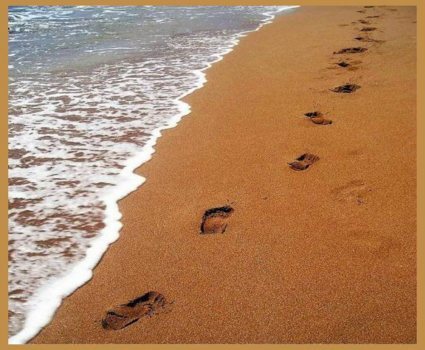
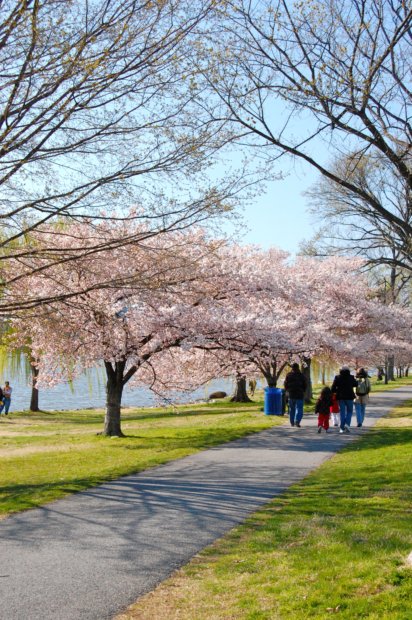
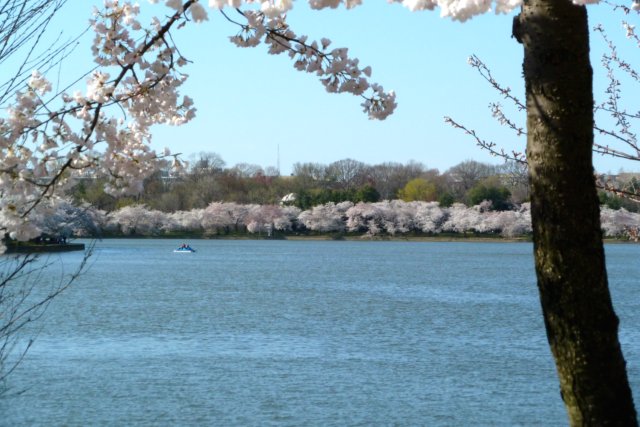
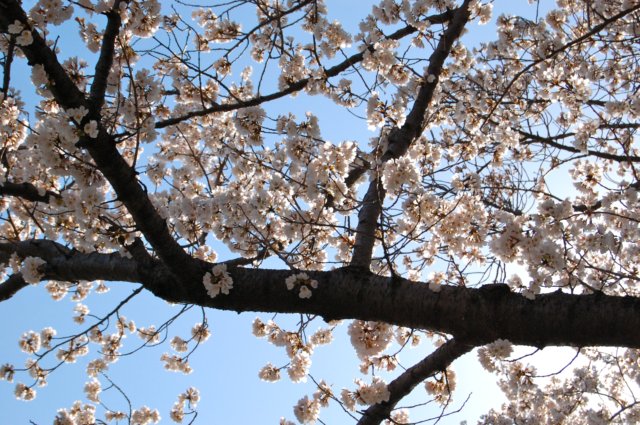


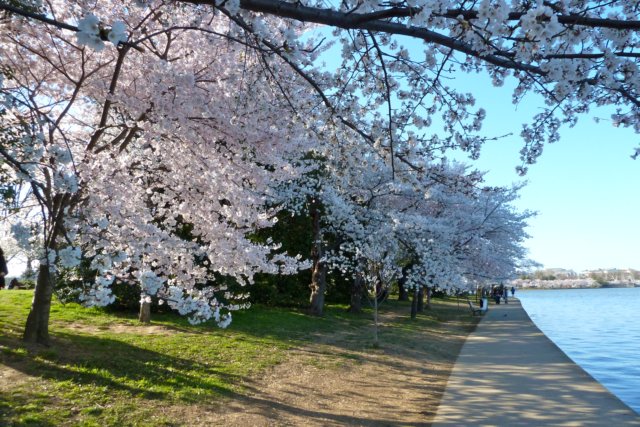


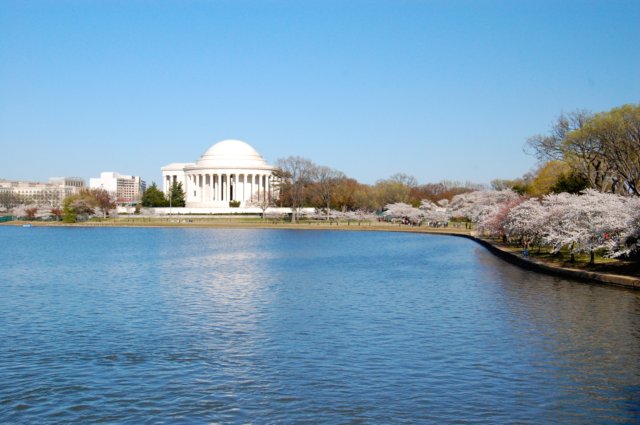
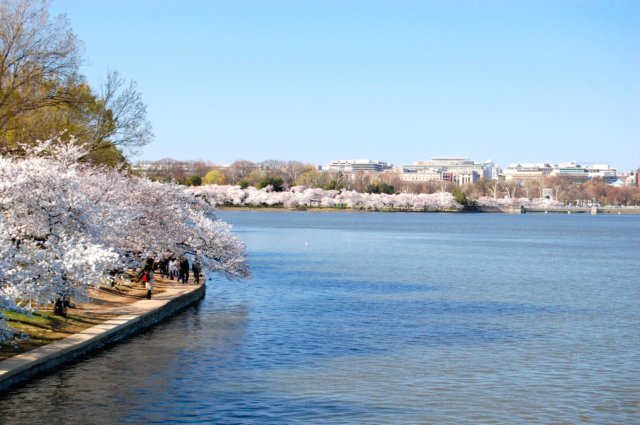
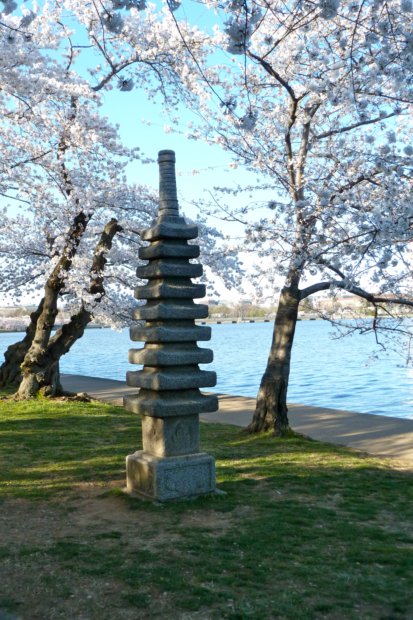
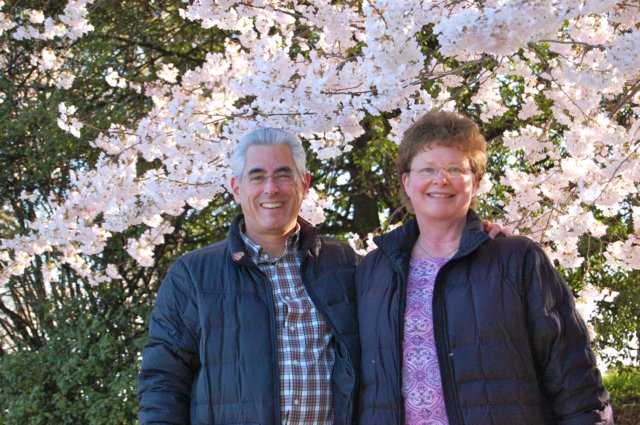
For some reason, that picture of you and Dad in your winter coats is just wrong... lol. Glad you enjoyed the cherry blossoms :)
ReplyDelete